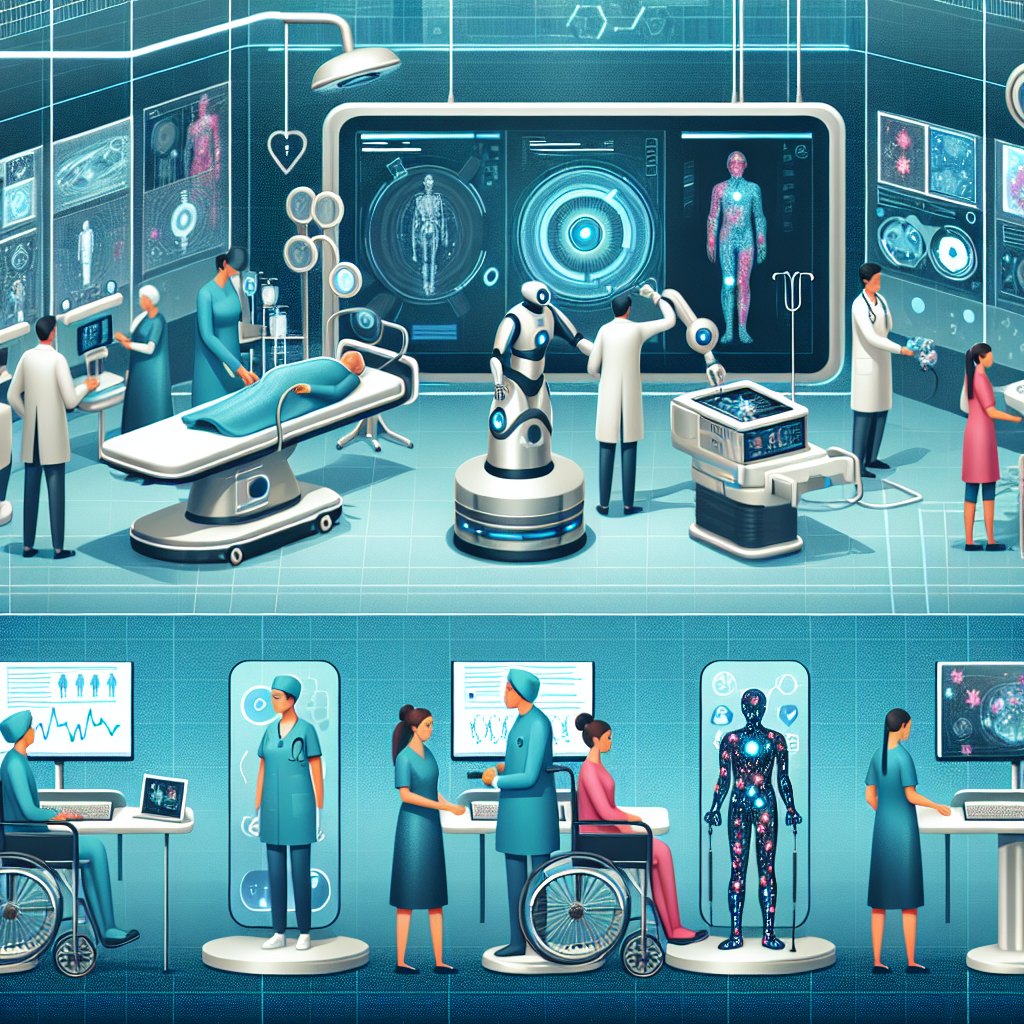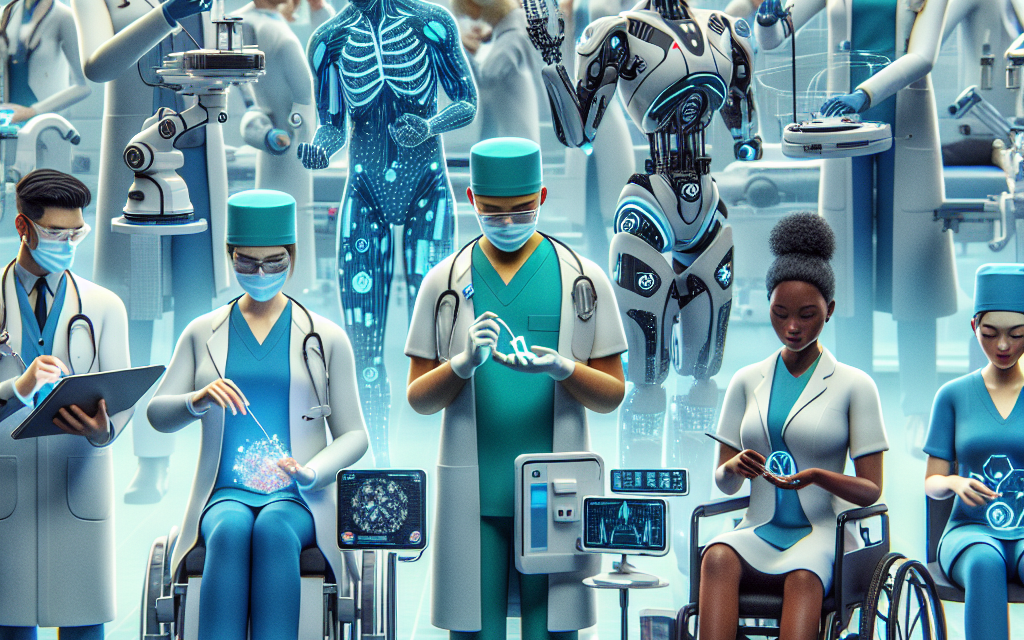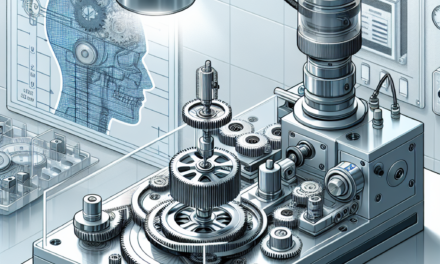Cutting-Edge Innovations Revolutionizing Modern Healthcare

In recent years, the healthcare industry has witnessed a remarkable transformation driven by technological advancements and innovative solutions. These cutting-edge innovations are not only enhancing the quality of care but also making healthcare more accessible, efficient, and personalized. This article delves into some of the most groundbreaking innovations that are revolutionizing modern healthcare, providing detailed insights into their impact and potential.
1. Artificial Intelligence and Machine Learning in Healthcare
Artificial Intelligence (AI) and Machine Learning (ML) are at the forefront of technological innovations in healthcare. These technologies are transforming the way medical professionals diagnose, treat, and manage diseases, leading to improved patient outcomes and operational efficiencies.
1.1 AI in Diagnostics
AI-powered diagnostic tools are revolutionizing the way diseases are detected and diagnosed. By analyzing vast amounts of medical data, AI algorithms can identify patterns and anomalies that may be missed by human eyes. For instance, AI systems have shown remarkable accuracy in detecting conditions such as cancer, diabetic retinopathy, and cardiovascular diseases.
One notable example is Google’s DeepMind, which developed an AI system capable of diagnosing over 50 eye diseases with an accuracy comparable to that of expert ophthalmologists. This technology not only speeds up the diagnostic process but also ensures early detection, which is crucial for effective treatment.
1.2 Personalized Medicine
AI and ML are also paving the way for personalized medicine, where treatments are tailored to individual patients based on their genetic makeup, lifestyle, and other factors. By analyzing genetic data, AI can predict how a patient will respond to a particular treatment, allowing for more precise and effective interventions.
For example, IBM Watson for Oncology uses AI to analyze patient data and recommend personalized treatment plans for cancer patients. This approach not only improves treatment outcomes but also reduces the risk of adverse effects.
1.3 Predictive Analytics
Predictive analytics powered by AI is helping healthcare providers anticipate and prevent potential health issues before they become critical. By analyzing historical data and identifying trends, AI can predict disease outbreaks, patient readmissions, and even individual health risks.
Hospitals are using predictive analytics to optimize resource allocation, reduce hospital readmissions, and improve patient care. For instance, the Cleveland Clinic has implemented predictive analytics to identify patients at risk of heart failure, enabling timely interventions and reducing hospitalizations.
1.4 AI in Surgery
AI is also making its mark in the field of surgery, where robotic systems are assisting surgeons in performing complex procedures with greater precision and control. Robotic-assisted surgeries are minimally invasive, resulting in shorter recovery times and reduced risk of complications.
The da Vinci Surgical System is a prime example of AI in surgery. It allows surgeons to perform delicate procedures with enhanced dexterity and accuracy, leading to improved patient outcomes and reduced hospital stays.
1.5 Challenges and Future Prospects
While AI and ML hold immense potential in healthcare, they also present challenges such as data privacy, ethical considerations, and the need for robust regulatory frameworks. Ensuring the security and confidentiality of patient data is paramount as AI systems rely on vast amounts of sensitive information.
Despite these challenges, the future of AI in healthcare looks promising. As technology continues to evolve, AI is expected to play an even more significant role in disease prevention, diagnosis, and treatment, ultimately transforming the healthcare landscape.
2. Telemedicine and Remote Patient Monitoring
Telemedicine and remote patient monitoring have emerged as vital components of modern healthcare, especially in the wake of the COVID-19 pandemic. These innovations are bridging the gap between patients and healthcare providers, making healthcare more accessible and convenient.
2.1 The Rise of Telemedicine
Telemedicine involves the use of digital communication technologies to provide healthcare services remotely. It enables patients to consult with healthcare professionals from the comfort of their homes, reducing the need for in-person visits and minimizing the risk of exposure to infectious diseases.
The pandemic accelerated the adoption of telemedicine, with many healthcare providers offering virtual consultations to ensure continuity of care. According to a report by McKinsey & Company, telehealth usage increased 38 times from pre-COVID-19 levels, highlighting its growing importance in healthcare delivery.
2.2 Benefits of Telemedicine
Telemedicine offers numerous benefits, including increased access to healthcare, especially for individuals in rural or underserved areas. It also reduces travel time and costs for patients, making healthcare more affordable and convenient.
Moreover, telemedicine enhances patient engagement and satisfaction by providing timely access to medical advice and reducing wait times. Patients can receive care for a wide range of conditions, from minor ailments to chronic disease management, without leaving their homes.
2.3 Remote Patient Monitoring
Remote patient monitoring (RPM) involves the use of wearable devices and sensors to collect and transmit patient data to healthcare providers in real-time. This technology enables continuous monitoring of patients’ vital signs, allowing for early detection of potential health issues and timely interventions.
RPM is particularly beneficial for managing chronic conditions such as diabetes, hypertension, and heart disease. For example, patients with diabetes can use glucose monitors to track their blood sugar levels, while healthcare providers receive real-time data to adjust treatment plans as needed.
2.4 Case Studies and Success Stories
Several healthcare organizations have successfully implemented telemedicine and RPM to improve patient care. For instance, the Veterans Health Administration (VHA) in the United States has been a pioneer in telehealth services, providing remote care to veterans across the country. The VHA’s telehealth program has resulted in improved access to care, reduced hospitalizations, and increased patient satisfaction.
Another success story is the use of RPM in managing heart failure patients. A study published in the Journal of the American College of Cardiology found that RPM reduced hospital readmissions by 50% among heart failure patients, highlighting its potential to improve outcomes and reduce healthcare costs.
2.5 Challenges and Future Directions
Despite its benefits, telemedicine and RPM face challenges such as regulatory barriers, reimbursement issues, and concerns about data security and privacy. Ensuring the confidentiality of patient data and maintaining the quality of care in virtual settings are critical considerations.
Looking ahead, telemedicine and RPM are expected to become integral components of healthcare delivery. As technology continues to advance, these innovations will play a crucial role in improving access to care, enhancing patient outcomes, and reducing healthcare costs.
3. Genomics and Precision Medicine
Genomics and precision medicine are transforming healthcare by enabling more accurate diagnoses, targeted treatments, and personalized care. These innovations are unlocking the potential of genetic information to revolutionize the way diseases are understood and treated.
3.1 The Role of Genomics in Healthcare
Genomics involves the study of an individual’s complete set of DNA, including all of their genes. Advances in genomic sequencing technologies have made it possible to analyze genetic information quickly and affordably, paving the way for personalized medicine.
Genomic data can provide valuable insights into an individual’s risk of developing certain diseases, their response to medications, and the most effective treatment options. This information is transforming the way healthcare providers approach disease prevention, diagnosis, and treatment.
3.2 Precision Medicine: A New Paradigm
Precision medicine is an innovative approach that tailors medical treatment to the individual characteristics of each patient. By considering factors such as genetics, environment, and lifestyle, precision medicine aims to provide more effective and targeted therapies.
One of the most significant applications of precision medicine is in oncology. By analyzing the genetic mutations driving a patient’s cancer, healthcare providers can select targeted therapies that are more likely to be effective. This approach has led to improved outcomes and reduced side effects for cancer patients.
3.3 Case Studies in Genomics and Precision Medicine
Several case studies highlight the impact of genomics and precision medicine on patient care. For example, the 100,000 Genomes Project in the UK aims to sequence the genomes of patients with rare diseases and cancer to improve diagnosis and treatment. The project has already led to the identification of new genetic variants associated with rare diseases, providing answers to patients and their families.
In another example, the use of genomic testing in breast cancer patients has enabled more precise treatment decisions. By analyzing the genetic profile of a tumor, healthcare providers can determine whether a patient is likely to benefit from chemotherapy, sparing them from unnecessary treatment and its associated side effects.
3.4 Ethical Considerations and Challenges
While genomics and precision medicine hold great promise, they also raise ethical considerations and challenges. Issues such as genetic privacy, informed consent, and the potential for genetic discrimination must be carefully addressed to ensure the responsible use of genetic information.
Additionally, the integration of genomic data into clinical practice requires significant investment in infrastructure, training, and education. Healthcare providers must be equipped with the knowledge and tools to interpret and apply genomic information effectively.
3.5 The Future of Genomics and Precision Medicine
The future of genomics and precision medicine is bright, with ongoing research and technological advancements driving progress in this field. As our understanding of the human genome continues to grow, these innovations will play an increasingly important role in improving patient care and outcomes.
Ultimately, genomics and precision medicine have the potential to transform healthcare by providing more accurate diagnoses, targeted treatments, and personalized care, leading to better health outcomes for patients worldwide.
4. Robotics and Automation in Healthcare
Robotics and automation are revolutionizing healthcare by enhancing surgical precision, improving patient care, and streamlining administrative processes. These innovations are transforming the way healthcare is delivered, making it more efficient and effective.
4.1 Robotic-Assisted Surgery
Robotic-assisted surgery is one of the most significant advancements in healthcare robotics. These systems allow surgeons to perform complex procedures with greater precision and control, resulting in improved patient outcomes and reduced recovery times.
The da Vinci Surgical System is a prime example of robotic-assisted surgery. It enables surgeons to perform minimally invasive procedures with enhanced dexterity and accuracy, leading to shorter hospital stays and reduced risk of complications.
4.2 Automation in Healthcare Administration
Automation is also transforming healthcare administration by streamlining processes and reducing the burden on healthcare staff. Automated systems can handle tasks such as appointment scheduling, billing, and patient record management, freeing up healthcare professionals to focus on patient care.
For example, chatbots and virtual assistants are being used to handle routine inquiries and administrative tasks, improving efficiency and reducing wait times for patients. These technologies are enhancing the patient experience and allowing healthcare providers to allocate resources more effectively.
4.3 Robotics in Patient Care
Robotics is also playing a role in patient care, with robots being used to assist with tasks such as medication delivery, patient monitoring, and rehabilitation. These technologies are improving the quality of care and enhancing patient outcomes.
For instance, robotic exoskeletons are being used to assist patients with mobility impairments, enabling them to regain independence and improve their quality of life. Similarly, robots are being used in rehabilitation settings to provide personalized therapy and support for patients recovering from injuries or surgeries.
4.4 Case Studies and Success Stories
Several case studies highlight the impact of robotics and automation in healthcare. For example, the use of robotic-assisted surgery at hospitals such as the Cleveland Clinic has resulted in improved surgical outcomes and reduced recovery times for patients.
In another example, the use of automation in healthcare administration at organizations such as Kaiser Permanente has led to increased efficiency and reduced administrative costs, allowing healthcare providers to focus on delivering high-quality care.
4.5 Challenges and Future Directions
Despite the benefits of robotics and automation in healthcare, there are challenges to overcome, such as the high cost of implementation, the need for specialized training, and concerns about job displacement. Ensuring the safe and effective use of these technologies is critical to their success.
Looking ahead, robotics and automation are expected to play an increasingly important role in healthcare delivery. As technology continues to advance, these innovations will enhance surgical precision, improve patient care, and streamline administrative processes, ultimately transforming the healthcare landscape.
5. Wearable Technology and Health Apps
Wearable technology and health apps are empowering individuals to take control of their health by providing real-time data and personalized insights. These innovations are transforming the way people monitor and manage their health, leading to improved outcomes and increased engagement.
5.1 The Rise of Wearable Technology
Wearable technology includes devices such as fitness trackers, smartwatches, and health monitors that collect and analyze data related to an individual’s health and fitness. These devices provide valuable insights into physical activity, heart rate, sleep patterns, and more.
The popularity of wearable technology has surged in recent years, with devices such as the Apple Watch and Fitbit becoming household names. These devices are helping individuals track their health metrics and make informed decisions about their lifestyle and well-being.
5.2 Health Apps: A New Frontier
Health apps are another key component of the digital health revolution. These apps provide users with access to a wide range of health-related information and services, from fitness tracking to mental health support.
For example, apps such as MyFitnessPal and Headspace offer personalized guidance on nutrition and mindfulness, helping users achieve their health goals. These apps are empowering individuals to take charge of their health and well-being, leading to improved outcomes and increased engagement.
5.3 Case Studies and Success Stories
Several case studies highlight the impact of wearable technology and health apps on health outcomes. For example, a study published in the Journal of Medical Internet Research found that the use of wearable devices was associated with increased physical activity and improved health outcomes among users.
In another example, the use of health apps for mental health support has been shown to reduce symptoms of anxiety and depression among users. Apps such as Calm and BetterHelp provide users with access to mental health resources and support, helping them manage their mental well-being effectively.
5.4 Challenges and Future Directions
Despite the benefits of wearable technology and health apps, there are challenges to overcome, such as data privacy concerns, the need for accurate and reliable data, and the potential for information overload. Ensuring the security and confidentiality of user data is critical to the success of these technologies.
Looking ahead, wearable technology and health apps are expected to play an increasingly important role in healthcare delivery. As technology continues to advance, these innovations will empower individuals to take control of their health, leading to improved outcomes and increased engagement.
5.5 The Future of Wearable Technology and Health Apps
The future of wearable technology and health apps is bright, with ongoing research and technological advancements driving progress in this field. As our understanding of digital health continues to grow, these innovations will play an increasingly important role in improving health outcomes and empowering individuals to take control of their health.
Ultimately, wearable technology and health apps have the potential to transform healthcare by providing real-time data and personalized insights, leading to improved outcomes and increased engagement for individuals worldwide.
Conclusion
The healthcare industry is undergoing a remarkable transformation driven by cutting-edge innovations that are revolutionizing the way care is delivered. From AI and machine learning to telemedicine, genomics, robotics, and wearable technology, these advancements are enhancing the quality of care, improving patient outcomes, and making healthcare more accessible and personalized.
As technology continues to evolve, these innovations will play an increasingly important role in shaping the future of healthcare. By embracing these advancements, healthcare providers can improve patient care, reduce costs, and ultimately transform the healthcare landscape for the better.
The future of healthcare is bright, with cutting-edge innovations paving the way for a more efficient, effective, and patient-centered healthcare system. As we continue to explore the potential of these technologies, we can look forward to a future where healthcare is more accessible, personalized, and effective for individuals worldwide.





